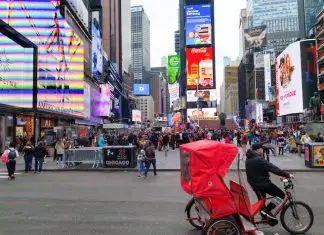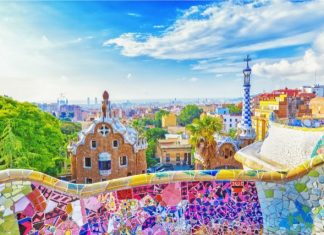If you have ever considered visiting Croatia, stop delaying! If you have never considered it, add it to your bucket list immediately. It is a stunning country in the beautiful Adriatic, comprised of a coastal mainland and over 1000 islands of varying sizes.
After our recent visit to Croatia, which ranks as our best tour yet, here are our ABCs of, and reasons for, visiting this aptly named “jewel of the Adriatic.”
A for AFFORDABLE
So, let’s compare Croatia to some other popular haunts in Europe. By looking at what the effect on your pocket will be for basics, such as accommodation:
For 2 persons sharing accommodation in pre-season June, in a 3* apartment, with a big double bed, bathroom, kitchenette, Wi-Fi, linen & towels included. Close to the major sights, you can budget on the following average cost per night (one should always try to compare apples with apples, which is not always easy, but in our comparison, we did try to compare similar typed accommodations):
Rome: $ 160, Paris: $190, London: $230.
Now compare Croatia:
Plitvace :$60, Split: $75, Hvar Old town, Hvar: $100, Dubrovnik: $110 . Yes, much cheaper!
- Our tip is to go in early June when the weather is very nice, but the rates (and the tourists!!) are lower.
B for BEST PLACES TO VISIT (AND STAY)
If we had to rate the sights in Croatia in the order we would go back there:
1. Plitvice Lakes:
- An absolute must on anyone’s bucket list. It is a wonderland of cascade upon a cascade of tufa waterfalls. At the same time, the absence, or availability, of sunlight changes the color of the water in the 16 lakes from a deep blue to unbelievable turquoise. All this is amid a green background of undergrowth, pine, and cedar trees.
Our tips:
- Go early, before the hordes of tour buses arrive. (Many daily tours are operated from towns such as Split – so they only arrive later in the morning, but when they arrive, it gets crowded) Having the walkways almost to yourselves early also allows you better photo opportunities. But, even with the hordes of tourists, the lakes are still a sight to behold.
- Wear comfortable shoes. You will do a lot of walking – if you are going to walk as much of the route as possible. While the pathways and surfaces are good enough for comfortable sandals, walking shoes are advisable. Especially if you are going to climb up the stairway at the left of Veliki Slap to get to the lookout point from which the well-known photograph below was taken, photographs from this vantage point are most often used in travel brochures of the lakes.
- Take your snacks and drinks. Food and drinks inside the Park are expensive and only available at certain spots. You can stop anywhere for a bite if you carry your eats & drinks. If you get thirsty, you can drink the water directly from the streams – this water is pristine and unpolluted – we drank from it without so much as even a slight stomach cramp later.
- You cannot get lost, so don’t fret. The whole idea at this Park is for a circular route to be followed. A small map is also printed on the ticket. Just know at which entrance you parked, and follow the signs demarcating junctions on the walkways. The entrance ticket includes a ride on a boat across the big lake and a ‘train’-ride – more like a bus consisting of several separate carriages.
- Consider that the weather may change – have an umbrella and something warm with you, although we were very fortunate with beautiful weather.
- Stay at a guest house outside the Park instead of one of the hotels inside. The price is extremely favorable, and you get to meet the locals.
- Allow for a full day’s exploring of the Park – We booked our accommodation for 2 nights so that we could leave early for the Park after our first evening and return to rest our tired legs after the day’s excursions on the second night, without having to drive to our next stop.
We stayed at a lovely, family-run guesthouse – “Guest House Bruna” – in Dreznik Grad, just outside the Park, about a 10 to 15 minutes drive to the entrance of Plitvice Lakes Park. This little town of Dreznik Grad was serene, with its little castle (although almost flattened through different wars) along the Korana River.
The host was very welcoming, ready with some homemade schnapps and entertaining us with his interesting conversation: This is a way of hospitality we would come to know throughout the rest of our travels through Croatia. The hosts always welcome you with some schnapps, sometimes even a light meal, and have a welcoming conversation. This a refreshing concept in today’s modern rush, where people do not get to know each other.
2. Dubrovnik:
“Game Of Thrones” fans will immediately recognize the walls of Dubrovnik as those of the fictional “King’s Landing” in the TV series, although somewhat altered for the series. But the Game Of Throne link is different from why we rate this as our number 2. This beautiful UNESCO-protected old town is just so very…. well, beautiful. Nestled along the steep surrounding hills, which plummet to the turquoise Adriatic sea below, with majestic walls to protect from a seaside invasion, its streets of marble, small old town streets, and alleys, it is just beyond compare.
Our tips:
- Prepare for steps, and embrace the exercise; it’s good for you!! Dubrovnik has a lot of steps. Chances are, even if your accommodation is quoted as “just 10 minutes from the old town,” it will be 10 minutes straight down hundreds of steps. Down is fine – if you do not have knee problems – but remember, what goes down, must go up again later. Parking right in the old town is also very limited and expensive, and even parking at the big Public Parking Garage will still leave you with lots of steps. Buses run straight up to the old town’s Pile Gate and will be the answer for persons with mobility issues, but they only run on the major streets. Therefore, before booking your accommodation, inquire about accessibility if you have such concerns.
- Walk the majestic walls: Everybody does this, and it can be crowded (and steps are involved!), but it is a spectacular experience. I especially enjoyed the seaside view from the walls. As with the Plitvice lakes – beware of the hordes of tourists, this time from the passenger liners that dock and spill out hundreds of eager tourists who want to walk the walls. Once again – be early – these liners dock later during the morning.
- Go up the mountain behind Dubrovnik, but instead of taking the cable car to the top rather, drive up! The road takes you straight to the top cable car station, and you get to save more than $30 per person.
- Watch the sunset over the Adriatic from this top cable car station – walk around to the western side and beware of the remaining trenches (from the Bosnian war in the 1990s) after dark. These sunsets are spectacular.
- Visit the museum in the old fort at the top cable car station – it commemorates the Bosnian war, how Dubrovnik was relentlessly bombed despite being a UNESCO-protected site, and how the people in Dubrovnik chose to fight, despite the odds. Shell holes in this fort is a clear reminder of this recent war which is all too easily forgotten.
- Take the ferry to Lokrum island. This island is a Nature reserve within about a 15 minutes boat ride from Dubrovnik’s old harbor. The ferry departs every half hour to a tree-covered haven, free from the hordes of tourists so that you can regenerate.
- Book a boat tour: Tour operators abound in the old harbor and might irritate you in trying to sell these tours, but since Croatia is comprised of so many islands, it is best explored from the sea. These boat tours will allow you to visit some of the more prominent islands without the benefit of having your yacht. Take note – if you book a boat tour in advance over the internet – ensure that you take note of the specific harbor your tour departs from. Some tours depart from Port Gruz, about a 15-minute bus ride from Dubrovnik’s old town.
- Eat outside the old town. As with all touristy places, the restaurants inside the old town are very overpriced compared to similar restaurants more towards the business center. But, hey, there is something to be said about the atmosphere inside the old town, with the narrow streets and having dinner at a small table in candlelight. Sometimes we want to do what all tourists do.!!
We again had the good fortune to stay at a wonderful guesthouse, “Villa Bona Dubrovnik,” where the hosts were also very friendly and attentive.
3. Trogir/Split and the blue grotto.
The waterfront, with the adjacent Diocletian palace and old town in Split, is worth a visit. Many speed boat tours to different islands also start from the Matejuska port, next to the promenade.
We went on a 10-hour long, 6-island, 3-cave tour by speedboat. This included the island of Bisevo, with a visit to the Blue Grotto (a cave in the limestone rock, where an underwater crevasse allows sunlight to deflect into the cave, giving it the spectacular blue lighting effect), and also visits the Monk seal cave and Green cave at Ravnik island. In addition, we had a snorkel in the Blue Lagoon on Budicovac island and some freshly prepared lunch exploring Smokova bay at the island Vis and on to the island Hvar and Hvar town. Finally, after the last visit to Milna on Brac island, we returned to Split, tired but happy.
Our tips:
- Parking in Split can be expensive, especially at the Riva (waterfront). There is cheaper parking behind the old town (you get different zoned parking areas at different prices).
- Consider morning peak traffic if you do not stay in Split and need to catch your ferry or tour from the harbor. If you must travel into Split, allow sufficient extra time for peak hour traffic so that you can catch your boat! With peak travel seasons, the number of extra vehicles also increases, all contributing to congested traffic.
- Choose a boat tour that suits your physique. Find out what boat will be used and the conditions you may endure before you book. We jokingly said we “crossed the Adriatic on horseback” due to the seating position on the speed boat. Though we thoroughly enjoyed the experience, older persons with hip, back, and joint problems might have experienced discomfort after such a long ride in the same position.
We opted to stay in a smaller town near Split, called Trogir, and we found its old town somewhat more intriguing than Split’s.
4. Pula and Rovinj
This Northern part of Istria seems to be neglected by organized tours of Croatia, possibly because it is a bit of a drive to get there from the more well-known towns of Dubrovnik and Split. However, the drive is short, and they have just as much beauty and character.
Pula, with its theater, and Rovinj, with its house walls right into the sea, was unique.
What was very noticeable was the large number of German-speaking tourists in this area – until we discovered that there is a very large Nudist holiday resort (mostly German) just outside Rovinj!
Our Tips:
- Base your accommodation at a common spot, either at one of the two towns or somewhere between, rather than booking accommodation for both Pula and Rovinj. These towns are near one another, making it easy to visit both without having to pack up each time.
We stayed in a beautiful apartment – “Apartment Hortensia,” where we fell in love with the kind nun who runs the establishment. She could not speak a word of English, but we could still communicate through our sign language version. She had a heart of gold, and I will always think back fondly of her. She had been looking forward to our arrival (being from South Africa) as she was expecting black people! A bit of a disappointment for her, I think!
5. Zagreb.
Zagreb was refreshingly different, with its colorful tiled roof of the 13th century St Mark’s Church, the Stone gate, which is now a shrine, and the Cathedral with its 2 spires. It was also less crowded with tourists.
We stayed at the Best Western Astoria Hotel – our only hotel for the tour since we wanted to spoil ourselves on our last night in Croatia. It was splendid! We had been upgraded to a bigger room for no reason, and the bed was SUPER comfy!
6. Zadar & Krka Waterfalls
Zadar was maybe not as special to us as some other towns, but it was still nice and had the sea organ & “greeting the sun” on its promenade, and it also rewarded us with a beautiful sunset.
Krka Waterfalls is just over an hour from Zadar and is almost as beautiful as Plitvice Lakes. However, you must purchase separate tickets for these boat excursions to visit some other falls or Visovac island, with its Franciscan monastery. From the Lozovac entrance, your entrance ticket includes a return bus ride from the parking area to the bottom of the valley at Skradinski, but – here, you can explore a circular route between the falls: Walking this route will take between one and two hours. You can always stop for a picnic and a swim at the bottom lake.
Our tips:
- The bus will drop you in the valley at Skradinski Buk, where there are numerous other busses from tour operators who are also allowed to deposit their tourists there. This causes some difficulty in establishing the shuttle bus and those of the tour operators. Ask a park official for instructions on where to wait for the bus back to the top.
- The wait for the shuttle can be quite a long process – especially since they need to allow for one-way traffic for all these buses. (Sometimes ignored by some drivers – causing further congestion). By the time the shuttle bus arrives, there are a lot of tired tourists all wanting to get on. Be very patient and prepare to stand your ground.
C for CROATIAN SEASIDE!
When visiting Croatia, make time to swim in the Adriatic. Go and relax on the beach. Soak up the sun.
Our tips:
- Almost all the beaches are pebble and rock, with only a few sandy beaches – take water shoes! Your feet will hurt too much to enjoy it if you don’t.
- Beware the sea urchins, especially if you have kids who may not know what they are and might want to pick them out of the water.
- Renting a deckchair and umbrella for a day or an hour will cost you the same. Make a day of it.
- Croatia might be known for its nudist beaches, but these are usually somewhat secluded or demarcated (FKK beaches). Consider if it is appropriate to bare all. And don’t photograph the nudies! Come on, have some sense!
- Take a snorkeling set. The water is beautifully clear for exploring.
So, should you go by Coach tour or a do-it-yourself?
Croatia’s roads are very good, their toll systems very simple, accommodation booking trustworthy and of good quality, and almost everybody in the tourist industry, and even elsewhere, can speak at least a bit of English. All reasons for making a do-it-yourself holiday very easy.
While coach tours have their advantages, as discussed in our article Travel with a group vs. planning your trip vs. Travel agents, there are more reasons NOT to do a Coach Tour in Croatia:
- Coach tours usually provide accommodation in big hotels outside the historic centers of towns: If you arrange your tour, you can stay close to, or in, the old town centers – if you like the vibe – or at small, family-run accommodations that will give you interaction with locals. CROATIANS ARE VERY INTERESTING PEOPLE – GET TO MEET THEM!
- Coach tours are rigid regarding time spent in certain towns. This is usually the case with your more expensive towns such as Dubrovnik. Very often, you might have liked to have an extra day or two in a certain town.
- You must explore some of Croatia’s coast by boat, either by renting your own or going on boat tours. Having the freedom to arrange as many excursions as you may not be available on a Coach tour.
- You should have time to relax on the beach. A Coach tour is often so rushed there is no time to unwind and for lying on the beach.
In booking our tour, we managed to stay for a whole week more, in the towns we wanted to stay in, for the same price as a similar organized Coach tour.
Happy holidays.








